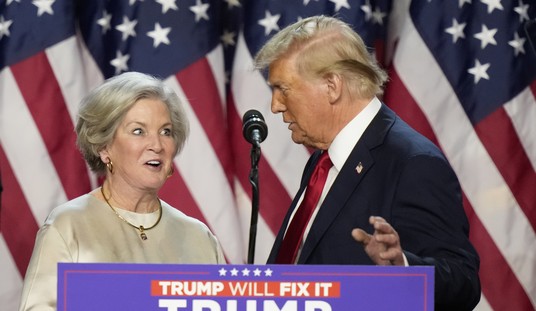Kate Bolick stares out at the world from the cover of The Atlantic magazine. She's wearing a black lace evening dress. "What, Me Marry?" asks the headline. She isn't smiling.
In fact, she isn't smiling in any of the photos that accompany her several thousand-word essay on singleness, marriage and the changing nature of dating and mating in America today. Bolick, 38, is groping toward accepting the idea that she may never marry. She badly wants to convince herself -- and us -- that older ideas about "unhappy" spinsters are silly cultural baggage best dropped off at the curb. And yet, there are those glamour shots -- Bolick behind the wheel wearing a fetching red dress; Bolick in a gold evening gown holding a glass of champagne; Bolick in a black cocktail dress -- but her expressions range from pensive to sad -- never happy.
Bolick seems genuinely conflicted about marriage. The daughter of a committed feminist, she marched off to third grade "in tiny green or blue T-shirts declaring: A WOMAN WITHOUT A MAN IS LIKE A FISH WITHOUT A BICYCLE." She recalls that when she was cuddling in the back seat of the family car with her high school boyfriend, her mother turned around and asked, "Isn't it time you two started seeing other people?" She took it for granted, she writes, "that (I) would marry, and that there would always be men (I) wanted to marry."
So sure was she of the limitless romantic opportunities available that at the age of 28, she broke up with a wonderful boyfriend. They had been together for three years. He was "an exceptional person, intelligent, good-looking, loyal, kind." Why did she discard him? "Something was missing."
Recommended
Ten years later, she writes somewhat (though not entirely) ruefully "If dating and mating is in fact a marketplace . . . today we're contending with a new 'dating gap,' where marriage-minded women are increasingly confronted with either deadbeats or players."
There is a great deal of interesting data in this piece. According to the Pew Research Center, 44 percent of Millennials and 43 percent of Gen Xers think marriage is becoming obsolete. As of 2010, women held 51.4 percent of all managerial and professional positions, compared with 26 percent in 1980. Women account for the lion's share of bachelors and masters degrees, and make up a majority of the work force. Three quarters of the jobs lost during the recession were lost by men. "One recent study found a 40 percent increase in the number of men who are shorter than their wives." Fully 50 percent of the adult population is single, compared with 33 percent in 1950.
But these trends, however interesting, shed only an oblique light on the problem of the decline in marriageable males. Bolick edges closer to the truth in her discussion of sex.
"The early 1990s," she writes, "witnessed the dawn of the '"hookup culture"' at universities, as colleges stopped acting in loco parentis (actually they relinquished that role in the 1970s) and undergraduates . . . started throwing themselves into a frenzy of one-night-stands." Some young women, she notes, felt "forced into a promiscuity they didn't ask for," whereas young men "couldn't be happier."
According to economist Robert H. Frank, "when available women significantly outnumber men . . . courtship behavior changes in the direction of what men want." And vice versa. If there's a shortage of women, the females have more power to demand what they want, which tends to be (surprise!) monogamy. On college campuses, women outnumber men by 57 to 43 percent.
But economic analysis can take you only so far. Men's capacity to insist upon promiscuity rests completely on female cooperation. And women have been foolishly compliant for decades.
They've conspired in their own disempowerment, not because they love their sexual freedom (though a few may), but because people like Gloria Steinem and Ms. Bolick's mother convinced them that the old sexual mores, along with marriage and children, were oppressive to women.
The resulting decline of marriage has been a disaster for children, a deep disappointment to reluctantly single women and unhealthy for single men, who are less happy, shorter-lived and less wealthy than married men. The sexual revolution has left a trail of destruction in its wake, even when its victims don't recognize the perpetrator.
























Join the conversation as a VIP Member